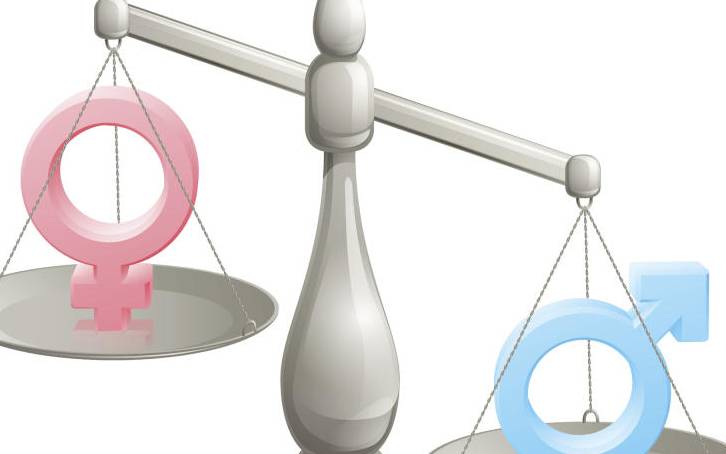
In the last few decades, agriculture has been recognised as the backbone of the economy for most African countries, representing about 15 per cent of the continent’s Gross Domestic Product (GDP).
Just as agriculture is the backbone of most African countries, so are women recognised in the sector as strategic contributors and players as they make up almost 50 per cent of the agricultural labour force in sub-Saharan Africa, an increase from about 45 per cent since 1980.
As farmers, farmworkers, horticulturists, businesswomen, entrepreneurs and community leaders, they fulfil important roles in agriculture and the development of rural economies.
There is, however, a difference in the share of female labour in agriculture across the different sub-regions with average percentages ranging from just over 40 per cent in Southern Africa to over 50 per cent in Eastern Africa.
Even though women make up almost 50 per cent of the agricultural labour force, a publication by Global Fund for Women titled Keeping food on the table in sub-Saharan Africa reported that women support the production of 80 per cent of the region’s food.
Women contribute extensively to food processing and marketing, household nutrition, and natural resource management.
Discriminatory laws
Despite this significant contribution, African women farmers are often excluded from conversations that determine agricultural policies, while discriminatory laws and practices deprive them of their land, their rights, and their livelihoods.
The inequalities surrounding women in agriculture also border on access to financing and agricultural resources. In some cases, the reward from their labour contribution remains measly.
Based on these facts and the desire to recognise and reward women’s effort in agriculture, the African Agricultural Technology Foundation (AATF) through its Cassava Mechanisation and Agro-processing Project (CAMAP) has had tremendous success in helping reduce labour for women and youths involved in cassava production in Zambia, Nigeria and Uganda. The project supports women in cassava production by encouraging them to form support groups and building their skills through training on farming as a business, good agronomic practices and linking them to markets upon harvest.
In Uganda, some of the women who participated in the CAMAP were able to build an improved brick house for their families and buy goats for milk production to supplement their income.
One of the women, a widow who wished not to be named, remarked, “I was afraid that I would not be able to feed my children upon the passing of my husband. This project has been a life-changer for me and my children.
Through cassava production on my 10 acres, I have bought three goats that I will keep for milk production. I also intend to increase my land size for cassava production.”
Cassava production
Stay informed. Subscribe to our newsletter
To support youth inclusivity, several youths in the three countries have been trained in mechanised cassava production and involvement in agribusiness in alignment with their needs.
The men were also involved in the project and incorporated as champions in support of women empowerment.
The gender agenda remains essential in implementing agriculture interventions and contributes to the sustainability of food security in developing countries.
Persisting gender inequalities constrain women’s productivity and food security and nutrition contribution.
Embracing gender transformative approaches is therefore critical to achieving accelerated agricultural growth, shared prosperity, improved livelihoods, and zero hunger.
Women, being a strategic block under the classification of smallholders, the group responsible for the production of much of the food needed on the African continent, should therefore be supported to have unhindered access to affordable and sustainable agricultural technologies that will scale up their contributions.
AATF intervention programme, CAMAP, was able to prove in Nigeria, Uganda and other places that with little access to technologies, the womenfolk could perform wonders since smallholders who were hitherto harvesting less than 10 tonnes per hectare suddenly started harvesting 27 tonnes.
- Ms Muinga is AATF head of Gender Unit
 The Standard Group Plc is a
multi-media organization with investments in media platforms spanning newspaper
print operations, television, radio broadcasting, digital and online services. The
Standard Group is recognized as a leading multi-media house in Kenya with a key
influence in matters of national and international interest.
The Standard Group Plc is a
multi-media organization with investments in media platforms spanning newspaper
print operations, television, radio broadcasting, digital and online services. The
Standard Group is recognized as a leading multi-media house in Kenya with a key
influence in matters of national and international interest.
 The Standard Group Plc is a
multi-media organization with investments in media platforms spanning newspaper
print operations, television, radio broadcasting, digital and online services. The
Standard Group is recognized as a leading multi-media house in Kenya with a key
influence in matters of national and international interest.
The Standard Group Plc is a
multi-media organization with investments in media platforms spanning newspaper
print operations, television, radio broadcasting, digital and online services. The
Standard Group is recognized as a leading multi-media house in Kenya with a key
influence in matters of national and international interest.







